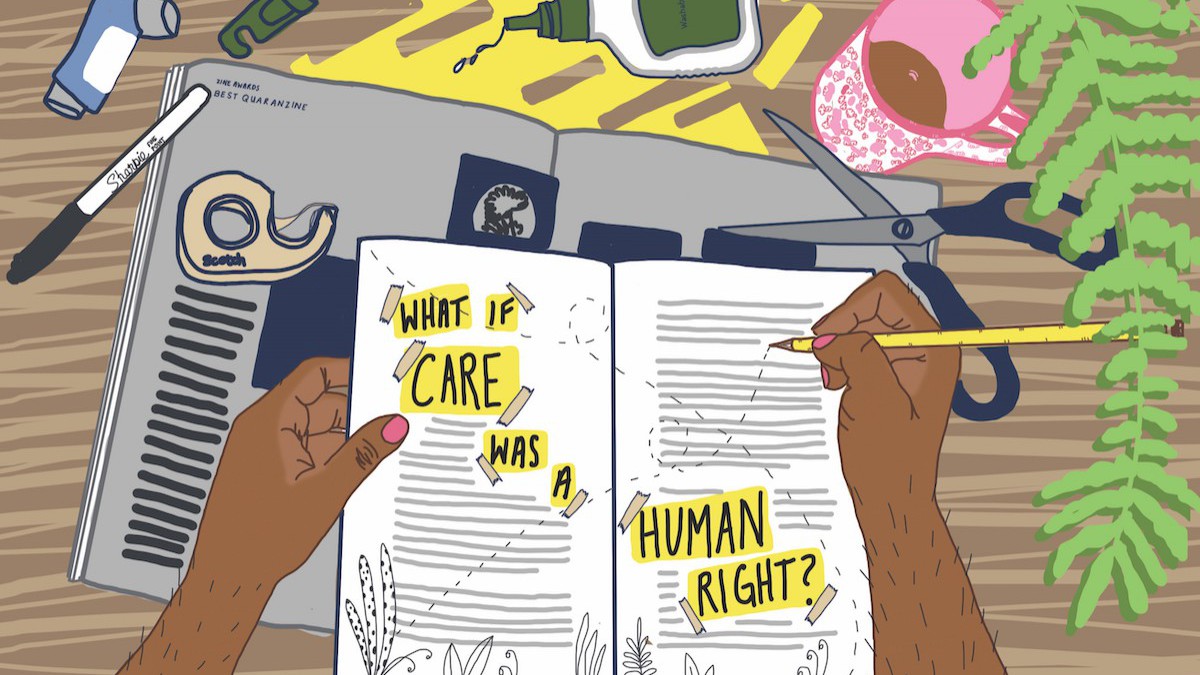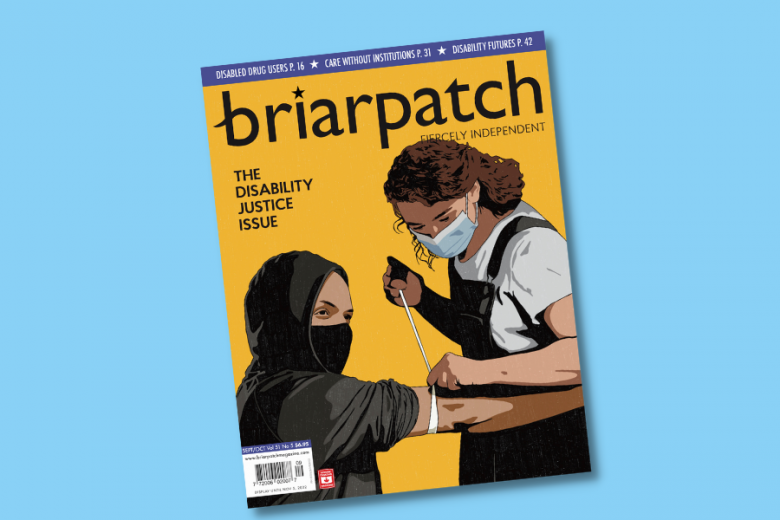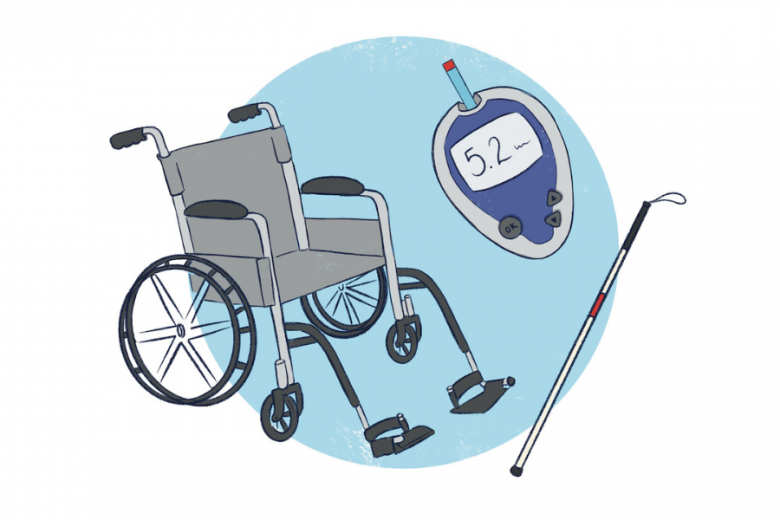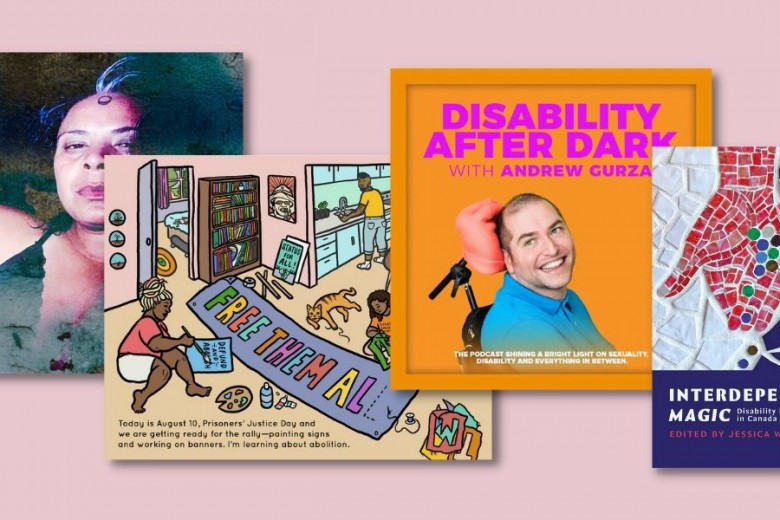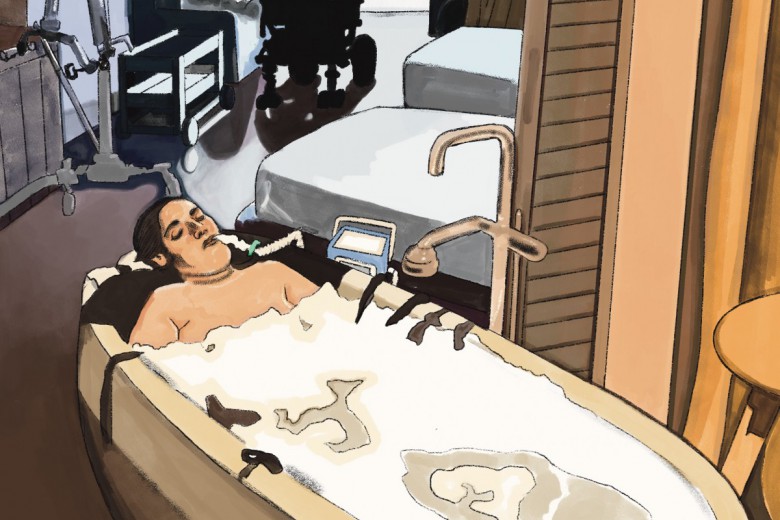Plain language summary (What is this?)
- This article is an interview with Leah Lakshmi Piepzna-Samarasinha, a writer and disability justice worker. Here’s what she says:
- It is radical to imagine a future with disabled people, especially disabled people in leadership.
- Disabled people have skills to keep people alive during the COVID-19 pandemic. More people are becoming disabled by COVID-19. Disabled people can support newly disabled people to learn strategies to thrive. This is an opportunity for more activism and social change that can make society more accessible.
- Disability activism can bring up grief for Black people, Indigenous people, and people of colour. We can create safe spaces to feel these feelings and work together to create better futures. We can make activism accessible to all different bodies and minds.
- Everyone deserves high-quality care, no matter who they are or what their background or behaviour is. There are good examples of this work being done now. For example, there are projects where disabled people work together with care workers to advocate for better working and living conditions.
- Care work can be joyful and fun. It won’t always be this way, but it is important to not just think of care as a burden.
Leah Lakshmi Piepzna-Samarasinha is a non-binary disabled femme writer, curator, and disability/transformative justice movement worker of Burgher and Tamil Sri Lankan, Irish, and Galician ascent. Their tenth book, The Future Is Disabled: Prophecies, Love Notes and Mourning Songs, will be released in October 2022. More of their writing can be found online at www.brownstargirl.org. Briarpatch interviewed Piepzna-Samarasinha about disability futures and care.
What does the term “disability futures” mean to you?
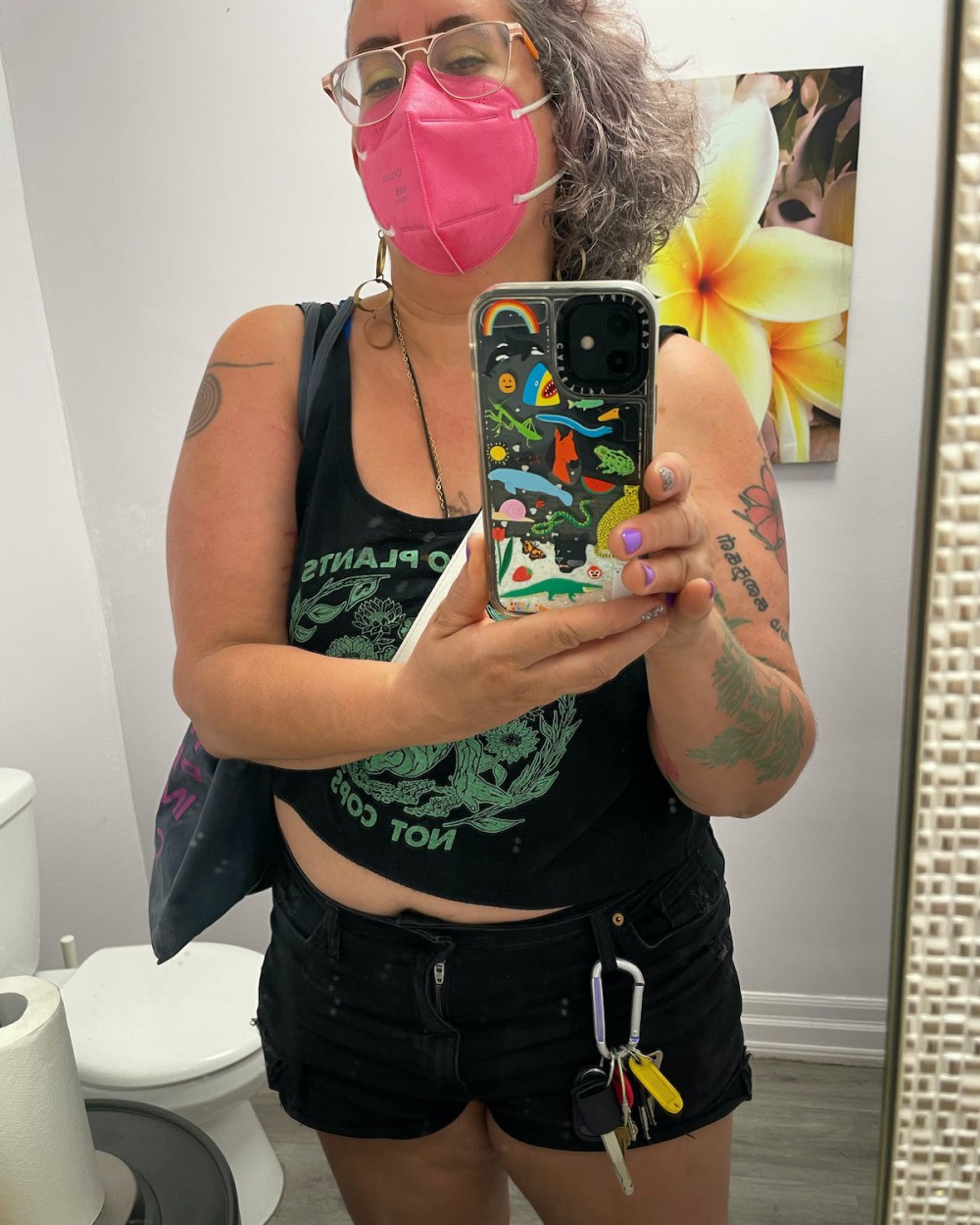
So, first of all, just the idea of saying that there are disabled people in the future is radical. And it’s even more radical to imagine a future where disabled, Deaf, neurodivergent people are thriving everywhere, shaping the way the world operates, in leadership. This is because so many people, from conservative and/or fascist people to progressive or radical people, hold the idea that there won’t be disabled people in the future – either because we’ve all been eliminated through eugenics, or because we’ll all have health care so, no more sickness! Either way, they think that it’s a good thing we won’t exist because we are inherently faulty versions of this “normal” abled, neurotypical, hearing body that is assumed to be the body and mind everybody wants.
Disabled skills, knowledge, and organizing are what’re keeping people alive right now. If you wore a mask or used an air purifier; if you figured out how to execute a care plan for yourself or a loved one; if you fought for vaccine equity or against medical violence or care rationing during COVID; if you are imagining a present and future without cops and prisons, where people can create safety and get the care they need without being locked up – you are organizing and surviving because of disability justice. We will not make it to freedom without disabled people in the lead and without abled, neurotypical, hearing people learning from disabled knowledge.
Everything has been different; everything has to be different; everything can be different.
The U.N. has for years said that 15 per cent of the world’s population is disabled. Disabled people have countered that that’s probably low because many people probably said, “oh no, I’m fine” when someone asked them. I agree with what Black, queer, fat, disabled, femme academic and writer Dr. Sami Schalk tweeted earlier this year: because of COVID-19 and a lack of access to health care, the majority of people are going to be disabled soon, if they aren’t already. Many of the hundreds of millions of people who got the virus are now disabled, living with long COVID. Many others are living with PTSD, depression, and deep grief from the strain (a totally inadequate word) of living through fascism, mass death, and economic and climate crisis. Dr. Schalk got a lot of backlash, but she said – and I agree – “hey, this isn’t a bad thing, it’s a chance to remake the world in the way we need!” COVID has meant a “cripping of the world” since 2019. We’ve been knee-deep in disabled practices: learning to connect virtually; being virus- and transmission-savvy; creating care; sharing food; using and sharing masks; demanding basic income and other social safety net supports, the end of debt and evictions, defunding the police; creating our own safety systems. We can keep going with this, and if most of the world is disabled, it is an opportunity to claim our power and build an accessible, just world. Everything has been different; everything has to be different; everything can be different.
In your book Care Work, you reference a comment made by Stacey Milbern about access as the starting point of movement building rather than the end goal. At the same time, this kind of work can bring up feelings of grief and rage over past experiences of scarcity and shame – especially for Black, Indigenous, and brown people. Could you talk about how social justice movements can provide space to feel this grief while still moving toward more hopeful futures?
Feel your feelings, do it anyway. Stacey and I did a lot of trainings for BIPOC organizations that weren’t primarily focused on disability but whose members wanted to learn. We also got asked by many white disability organizations if we would come make them be not racist – we declined, because life is too short to watch white people cry and yell at you. ;) We were invested in seeing if we could build accompliceship. For BIPOC people, talking about this stuff means facing painful histories of genocide, war, prison, loved ones who have been institutionalized, pesticide poisoning. Pain and shame, basically.
Everything is better when there are chairs at the demo, when work happens accessibly, when you don’t feel like a failure if you get sick.
However, what we also saw was that BIPOC-only conversations about disability created powerful spaces of healing and transformation. Once it’s not all white people limiting what you share, you can dare to say what you need and co-create spaces to make it possible. Access just feels great! Knowing you can say what’s going on for you and people won’t roll their eyes, knowing you don’t have to leave activism because you have a body – it feels great. Everything is better when there are chairs at the demo, when work happens accessibly, when you don’t feel like a failure if you get sick. I think we can make room to grieve our dead and our histories with institutionalization, eugenics, medical violence, and ableism and also not be like “we’re so sad, we can’t do anything.” You can see the joy and possibility in everything from No More Silence’s Accessible Sweatlodge project to the Disability Justice Network of Ontario’s free assistive devices lending library in Hamilton to the virtual Sick and Disabled Zine & Craft Fair to a million disabled art and culture projects to work happening in kink and queer and trans party spaces to insist on masks and air purifiers so we can dance and fuck and stay safe.
One complexity many people struggle with is creating models of care that don’t depend on “likeability.” We talk a lot about community and other networks of kin, but many of our current ideas of the future assume access to a close-knit network of people who look out for each other. How can we think about world-building in a way that truly embraces the idea that no one is disposable?
It’s true that mutual aid does a lot – more than the state usually or ever does – and it’s also true that mutual aid can and has gotten really fucking strained because, as one organizer I know said, “Mutual aid is not supposed to be what runs the sewage system!” (And yet, we kind of are running the sewage system….) Especially in summer #3 of the forever COVID, many of us are buckling into crisis and leaning on people who themselves are barely holding it together. In this situation, people can need care but not get it, sometimes because they’re isolated and lacking community. But also, what about when people are abusive or in a really bad mood, but still need and deserve care? Besides, plenty of people who do have community and friends might find that community might not necessarily have the skills to give them the kind of care we need, because not everyone knows how to do crisis counselling or how to lift someone off and on the toilet, you know?
I think this is one of the big questions we’ll face as disability justice grows and we scale up our organizing: what is the future of care we want to make?
What would it mean to have systems of both community- and relationship-based care, as well as care from strangers who are well compensated and respected?
Lately I’ve been thinking a lot about the concept of care libraries/pantries. Speculative fiction can help us here, both books that are already written and stories we create ourselves. In The Dispossessed by Ursula K. Le Guin, which imagines an imperfect but fairly just anarcho-syndicalist utopia, capitalism is over and there are huge storehouses from which anyone can take whatever they need, whenever they need it. I think about what that might look like for care. What if care was a human right? What structures would make that possible? What would it mean to have systems of both community- and relationship-based care, as well as care from strangers who are well compensated and respected?
Domestic workers and disabled people are fighting together for care to be valued. The Care Can’t Wait and Portraits of Care visual art campaigns by Hand in Hand and the National Domestic Workers Alliance are amazing – both for showing loving, just relationships between caregivers and the people they care for (and showing how many of them are both disabled!) and for demanding that care workers get fair pay, full benefits, and conditions that lead to respect. These demands are a win-win for both disabled people receiving care and care workers themselves. Supporting this kind of organizing, both in making demands of governments to fund caregiving and in creating all kinds of spaces where people can access care – unpaid care collectives, care collectives where people might get paid for their work, respite care services, etc. – are things we can do right now to start building the future we need.
There is a pervasive ableist idea that disabled lives are less worth living. Meanwhile, the pandemic has led to significant numbers of people becoming newly disabled. I’m thinking about the idea of crip doulaing (coined by Stacey Milbern), which views coming into disability as a birth, not a death. I’m curious about what welcoming those who are new to the identity of disabled in a life-affirming way that embraces futurity would look like for you.
We need crip doulaing on a massive scale. That’s happening informally, as a lot of us who have been disabled for a long time talk with loved ones with long COVID. Some organizations, like Senior and Disability Action, are creating more formal mentoring and group support and bringing newly and long-time disabled folks together. I also see some folks finding disabled community and politics a lot more easily than we did 20 years ago, because disability justice has kicked a lot of ass, creating art, politics, community, and resources, so now a lot of people are finding crip shit via TikTok. There still needs to be exponentially more. Without it, we’re at risk of a lot of suicide and depression as people become disabled and can’t connect to anyone who knows how to live through low energy, terrible doctors, and body changes. There needs to be something interrupting the “fate worse than death” messages.
What does it mean to understand access and care as deeply joyful? What can this approach bring to larger social justice movements?
Oh, brother. I mean, first of all, I want to say, sometimes care sucks! Sometimes it’s a pain in the ass, and you just have to take the garbage out and you don’t have to have an orgasm about it every time. But I started talking about how care can be pleasurable, erotic, joyful – which came out of my own experiences of being ashamed to ask for help and witnessing the ways care and access were offered begrudgingly or not at all. There was a sense that care was a terrible chore, and that stopped a lot of organizing projects from being willing to offer it. When I experienced crip-made access in Creating Collective Access in 2010 – a disabled BIPOC queer community space where we helped each other and it was fun, loving, and creative – everything shifted for me.
So many of my earlier experiences in movement spaces were of people being like, “this is a thing we have to do for those people, I guess.” But it was never seen as joyful or fun or, like my friend T. Kebo Drew of the Queer Women of Color Media Arts Project (QWOCMAP) frames it: “Of course I want my grandmother to be at the film festival – of course I want everyone to come!” Access can be a space of deep solidarity, radical love, and welcoming.
I also see some folks finding disabled community and politics a lot more easily than we did 20 years ago, because disability justice has kicked a lot of ass, creating art, politics, community, and resources, so now a lot of people are finding crip shit via TikTok.
This comes from the Disability Justice Audit Tool, which Stacey and I came up with the idea for and which I worked on after her death. It’s a tool that BIPOC groups, orgs, and people can use to learn and reflect on how we practice DJ. People reviewing it asked us to include some stories of BIPOC organizations that had transformed to centre disability justice, and Kebo told the story of QWOCMAP. They’re a giant, working-class queer Black, Latinx, and Asian-led filmmaking project and film festival. They came from a place of asking, “we can’t do all the access in the world by ourselves, but who do we partner with to make this happen?” which has led to things like their collab with the Women’s Cancer Resource Center (WCRC). During one of the many recent wildfire emergencies in California, QWOCMAP was holding an annual film program in WCRC’s offices, and participants ended up using the building as a refuge because it has an air filtration system. Or the Buddhist fellowship Block Build Be having “access pixies” at all their gatherings, which helped people who’d been shy to share their needs share them because it was so safe and welcoming.
If most of the world is sick or disabled, if we’re all traumatized, if we all have bodies and minds, if disabled people are sacred and crucial, then when we continue to evolve spaces of radical disabled and neurodivergent and Deaf creativity, survival, love, and communion, we’re going to win. And we’re going to have deep pleasure and success while we do so.


